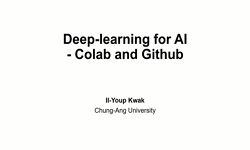For endoscopists, large-scale screening of gastrointestinal (GI) diseases is arduous and time-consuming. While their workload and human factor-induced errors can be reduced by computer-aided diagnosis (CAD) systems, the existing ones mainly focus on a...
http://chineseinput.net/에서 pinyin(병음)방식으로 중국어를 변환할 수 있습니다.
변환된 중국어를 복사하여 사용하시면 됩니다.
- 中文 을 입력하시려면 zhongwen을 입력하시고 space를누르시면됩니다.
- 北京 을 입력하시려면 beijing을 입력하시고 space를 누르시면 됩니다.


Computer-aided diagnosis system based on multi-scale feature fusion for screening large-scale gastrointestinal diseases
한글로보기https://www.riss.kr/link?id=A108501587
-
저자
Pang Xuejiao (School of Control Science and Engineering, Shandong University, China) ; Zhao Zijian (School of Control Science and Engineering, Shandong University, Jinan 250061, China) ; Wu Yanbing (School of Control Science and Engineering, Shandong University, China) ; Chen Yong (Department of Gastroenterology, Shandong Provincial Hospital Affiliated to the Shandong First Medical University, Jinan 250021, China) ; Liu Jin (Department of Gastroenterology, Shandong Provincial Hospital Affiliated to the Shandong First Medical University, China)
- 발행기관
- 학술지명
- 권호사항
-
발행연도
2023
-
작성언어
English
- 주제어
-
등재정보
KCI등재,SCOPUS
-
자료형태
학술저널
-
수록면
368-381(14쪽)
- DOI식별코드
- 제공처
-
0
상세조회 -
0
다운로드
부가정보
다국어 초록 (Multilingual Abstract)
For endoscopists, large-scale screening of gastrointestinal (GI) diseases is arduous and time-consuming. While their workload and human factor-induced errors can be reduced by computer-aided diagnosis (CAD) systems, the existing ones mainly focus on a limited number of lesions or specific organs, making them unsuitable for diagnosing various GI diseases in large-scale disease screening. This paper proposes a transformer and convolutional neural network-based CAD system (called TransMSF) to assist endoscopists in diagnosing multiple GI diseases. This system constructs two feature extraction paths with different coding methods to obtain the lesions’ global and local information. In addition, downsampling is implemented in transformer to get global information of different scales, further enriching the feature representation and reducing the amount of computation and memory occupation. Moreover, a channel and spatial attention module with fewer parameters was successfully designed to pay more attention to the target and reduce the loss of important information during spatial dimension transformation. Finally, the extracted feature information is fused through the feature fusion module and then input into the linear classifier for disease diagnosis. The proposed system outperformed that of other state-of-the-art models on two datasets, reaching a 98.41% precision, a 98.15% recall, a 98.13% accuracy, and a 98.28% F1 score on the in-house GI dataset versus a 95.88% precision, a 95.88% recall, a 98.97% accuracy, and a 95.88% F1 score on the public Kvasir dataset. Moreover, TransMSF’s performance was superior to that of seasoned endoscopists. The above results prove that the proposed system is instrumental in diagnosing GI diseases in large-scale disease screening. It can also be used as a training tool for junior endoscopists to improve their professional skills by rendering helpful suggestions.
동일학술지(권/호) 다른 논문
-
- 한국CDE학회
- Aboutalebi Payam
- 2023
- KCI등재,SCOPUS
-
- 한국CDE학회
- Wang Wenjie
- 2023
- KCI등재,SCOPUS
-
- 한국CDE학회
- Wu Hanlin
- 2023
- KCI등재,SCOPUS
-
- 한국CDE학회
- Bae Jun-Hyeok
- 2023
- KCI등재,SCOPUS




 KCI
KCI






